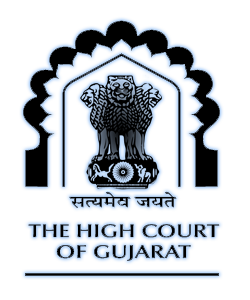History
Mahisagar District
Mahisagar District is the state of Gujarat in India that came into formation as new District seperated from the Panchmahal and Kheda District on 26 January 2013. The district name was Mahisagar given from “Mahi River”. Lunawada is the district headquarters of Mahisagar. It started its operation in full-fledged from 15 August 2013. Further, Judicial District established on 02.04.2017. Lunawada is the administrative headquarters of the Mahisagar district and one of most developing town of central Gujarat. Mahisagar district consist of 6 (Six) talukas namely Lunawada, Santrampur, Balasinor, Kadana, Virpur & Khanpur
Lunawada
Lunavada State was founded in 1434. The name Lunawada is derived from ”Luneshwar Mahadev”, a temple of Lord Shiva. Lunawada was established by the ancestors of Maharaja Vir Bhadra Singh as the state of Virpur, then it returned to the state of Lunawada. Before the town was established, the area was controlled by the princely state of Santrampur, ruled by Puwar Rajputs. The border of Santrampur state is near Koyli Vaav known as Mandvi Bazar. The last ruler of Lunawada was Maharaja Vir Bhadra Singh.
Santrampur
Santrampur, which used to be known as ”Brahampuri”, is a town in Mahisagar District. It is located on the banks of the Suki river in the lap of the Aravalli hills. King Zalam Sinh of Malwa dynasty developed their kingdom by making Sunth or Sant as a capital of their state in 1255. It became Sant State, recognised as princely state in western India during the colonial British Raj era now known as Santrampur.
Balasinor
Balasinor (also referred to as Vadasinor) is a city located in the Mahisagar district was founded in the 18th century. The rulers were titled Nawab Babi. Formerly a princely of the Babi dynasty belonging to the Babai (Pashtun tribe), it was created on 28 September 1758 out of the state of the Junagadh Babis.
”Dinosaur Fosill Park, Raiyoli” is popular visiting place of Balasinor Taluka. In the early 1980, palaeontologists stumbled upon dinosaur bones and fossils during a regular geological survey of this mineral-rich area. They found dinosaur egg hatcheries and fossils of at least 13 species of which the most important discovery was that of a carnivorous abelisaurid named Rajasurus narmadensis which lived in the Late Cretaceous period. Piecing together the evidence in Raiyoli, researchers now believe that Gujarat is home to one of the largest clutch of dinosaur hatcheries in the world. At least 13 species of dinosaurs lived here, possibly for more than 100 million years until their extinction some 66 million years ago.These fossilised dinosaur remains have triggered what tourism officials of the Gujarat state call “Dinosaur Tourism”.
Kadana
Kadana is a village and tehsil in the Mahisagar district of the Indian state of Gujarat. It is situated on the riverbank of Mahi River. Kadana is the site of the Kadna Dam, which generates 240MW of hydroelectic power. The dam was built between 1979 to 1989 and is a part of Santrampur (Vidhan Sabha cosntituency). The construction of a new bridge over the Mahi river, near to the dam, started at the end of 2016.
Virpur
Virpur is a taluka of Mahisagar DIstrict. The Mahisagar river flows some 10 kilometres (6.2 mi) from the village and this, too, has religious symbolism. It was once a site of pilgrimage for yatris who came to pay homage to a goddess.
Khanpur
Khanpur is a town in the Mahisagar district. The best known historical place near Khanpur at Bakor is Kaleshwari where there are Pandav chori, foot prints of Bhima, ancient water kund (small bodies of water sometimes sanctified), several vaavs (large wells with accessible steps to the water level) and the Lord Shiva temple.



